Nikolay Yakovlevich Matyukhin - a talented creator of domestic computing technology
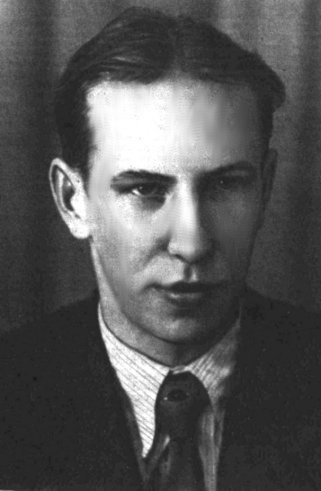 This year would have turned 90 years old to a great mind, one of the pioneers of domestic computing technology, Nikolai Yakovlevich Matyukhin.
This year would have turned 90 years old to a great mind, one of the pioneers of domestic computing technology, Nikolai Yakovlevich Matyukhin.
A graduate of the Radio Engineering Faculty of Moscow Power Engineering Institute, a talented student of Isaac Semenovich Bruk, a leading developer, later a doctor of technical sciences, a professor, a corresponding member of the USSR Academy of Sciences — he stood at the beginning of the emergence of electronic computer engineering in the USSR. The soul of the team, the main engine, the creative leader in the laboratory of electrical systems of the Energy Institute of the USSR Academy of Sciences (ENIN) Isaak Semenovich Bruk is the “semi-legal” holy of holies, where the M-1 computers were created (it implemented the von Neumann architecture) and M-3. What was the path of Nikolai from a student rejected by the personnel commission when submitting documents to graduate school to the chief designer of specialized computers for the air defense of the country?
The beginning of the last century was stormy and difficult: the impending revolution, the growing opposition between the tsarist government and the radical opposition. Father - Jacob V. Matyukhin from simple peasants, date of birth - 1880, place of birth - with. Gorodets, Vygonichsky district, Bryansk region; actively participated in the revolutionary movement, in the beginning of 1900 he was a member of the district committee of the SDLP of the Vyborg side of Petrograd; He was personally acquainted with many well-known members of the Social Democratic Party in history, among them Kalinin, Stalin, Ordzhonikidze. Matsyukhina's safe flat often became their meeting place. Moving away from his political activities, Jacob took his place among the working class, earning his living as a technician-electrician. In 1932, while still under the auspices of Kalinin, Matyukhin moved to the capital, here the family was given a nice apartment at the address Moscow, ul. Granovsky (so from 1920 to 1992 Romanov Lane was called). Here are located residential buildings in the vicinity of the Kremlin, in which the families of the first persons of the state lived (Khrushchev, Frunze).
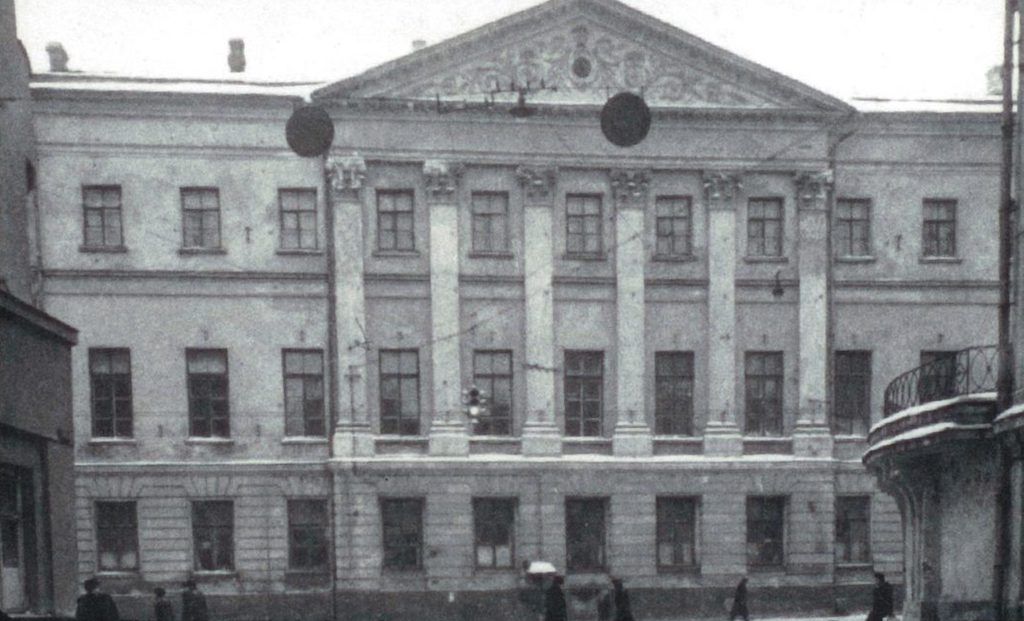
st. Granovsky
The move did not foreshadow the events that followed, the family rejoiced at life in the capital and comfortable living conditions. Only 5 years have passed and Yakov Vasilyevich was arrested, two years later the VC VS was convicted for anti-Soviet terrorist activities (in another source he was convicted under Articles 58-10.), Which means being charged for propaganda or agitation, calling for the overthrow of Soviet power. ) June 28, 1939. He was sentenced to 8 years in prison. He was imprisoned in the Oryol prison, as was mentioned in his case — he was a Menshevik. The political prisoner was never destined to rejoice in his son’s further services to the fatherland; on September 15, 1941, he was shot, Stalin ordered a massive execution of political prisoners in the Oryol Central on September 11, 1941. Everything happened a couple of weeks before the occupation by the German troops of the city, until 1943 a concentration camp was organized here. In 1957, Matyukhin Yakov Vasilyevich was rehabilitated ...
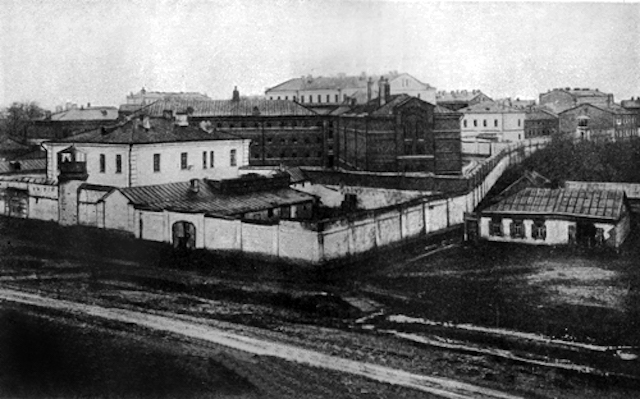
Oryol Central - special prison of the NKVD
Difficult times came for the family of Matyukhs after the arrest of the head of the family: they were evicted from the capital, and they had to sell personal belongings, they only had enough money to buy a small room in the village of Solntsevo (Moscow region). From August 1941 (at the time of the war) the Matyukhins were forced to temporarily move to Penza to visit relatives.
Mother - Margarita Fedorovna Matyukhina - a very educated woman, the year of her birth dates back to 1895, the birthplace is the city of Bobrov of the Voronezh region, her father was a clerk in a gymnasium. It was an old, enlightened family of Pereverzevs. Margarita's brother, Valerian Fedorovich, was a fairly well-known personality, a professor of literature at Moscow University, a reviewer of Dostoevsky and Gogol. Margarita, after graduating from high school, went to work in primary school. After the meeting with her father, Matyukhina did not work, was engaged in housekeeping. When Kohl was born (1927), mother devoted the lion's share of her time and strength to raising and educating her son.
Years of study
At the age of 8 (1935), Nikolai Matyukhin went to school, the subjects were given to him easily, his parents could not rejoice at the success of the children. After successful graduation in 1944, he entered the Radio Engineering Faculty of the Moscow Power Engineering Institute. “The Son of the Enemy of the People” gnawed on granite science “brilliantly” and even received a diploma with honors; he was attracted by VHF radio transmitters, selecting the transmitters department, tried to apply for admission to the postgraduate school of MEI, but the personnel committee rejected his candidacy. As a student, Nikolai participated in scientific research, he was presented with two copyright certificates for the invention of a new radio transmitter system with an increased efficiency. Fate was favorable to a talented guy: his place of work was the laboratory of I. S. Bruk. Thanks to the teacher in the person of Brooke, who had first discerned the gifted future specialist in the guy, Matyukhin began his career path.
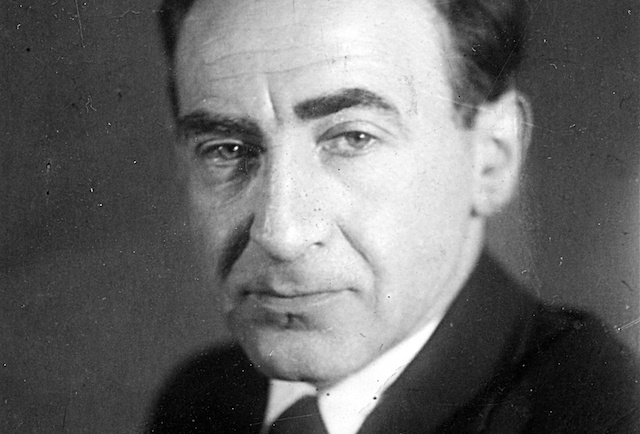
I.S. Brooke
Finishing the radio engineering faculty of Moscow Power Engineering Institute, I seriously became interested in working in the VHF radio transmitting devices and did not even imagine the sharp turn that awaited me after graduation. A month after defending my diploma, I was invited by the vice rector of the MEI Chursin and introduced me to a short, extremely lively and energetic man who began to question meticulously about my interests and my work. In conclusion, he invited me to a “modern” job at one of the institutes of the Academy of Sciences. It was a corresponding member of the USSR Academy of Sciences, I.S. Brooke, my future mentor and leader.
Not numerous, in comparison with the groups of academician S.. Lebedeva (ITM and VT Academy of Sciences of the USSR) or the group NICEVT Yu.Ya. Bazilevsky, a group in Brooke's laboratory, somehow resembled a family. Graduates of the Moscow Power Engineering Institute, the MAI and the Gorky University — young novice engineers — could not imagine how difficult their work on the creation of small computers could be, which is probably why they started to carry out tasks with all their enthusiasm. The laboratory itself was partially located in the main building of the ENIN, and partly on the first floor and in the basement of the building next to it (house No. 18 on Leninsky Avenue). From Matyukhin's memoirs: working in a team led by Brooke was interesting and fun. Often, Nicholas stayed overnight on the sofa in the laboratory, as he lived in Solntsevo and, having earned money, simply did not have time to return home.
In the laboratory, he met his future wife, Alexandridi Tamara Minovna , with whom she happily lived together for 34 years, raised her son Boris (Matyukhin adopted Tamara’s son) and daughter Katerina. She was captivated by this intelligent, educated, tall young man, Kolya. Tamara Minovna wrote her thesis on the development of a storage device on cathode ray tubes under his leadership. They spent a lot of time apart from work together. They were united by the general hobbies of tourism, ski trips and, of course, joint work in one team. From her memories of their leisure time:
... on Saturday evening we were getting ready, traveling by train to the Istra reservoir, and there we spent Sunday, and from there immediately went to work. Agitpokhody arranged excellent, and hiking and skiing. At that time we were very fond of volleyball. I took volleyball to our laboratory. It was located on Kaluzhskaya street, house 18, next to it was Neskuchny garden. And we were there at lunchtime stretching the net between the trees, and everyone was playing volleyball
The first production task of Nikolai Matyukhin in the laboratory was the assembly of a three-input combiner adder on 6x6 lamp diodes. In the 50 years, there was, to put it mildly, a shortage of textbooks, students diligently recorded and kept notes with lectures, from which later they drew knowledge to solve the problems posed. Nicholas, in parallel with his studies at the institute, attended evening English courses in order to sufficiently master the language to read English-language technical texts.
The young specialist, Nikolay Matyukhin under the leadership of Brooke, went deep into the problem of building digital computers, which became the first step of the ladder called “the creation of the first native digital computer”. The young team of Brooke, headed by the main developer Matiukhin, was given a new vector in his work - the creation of an automatic digital computer. Soon M-1 was completed.
COMPUTER M-1

The choice of the command system itself was not an easy task for us - at that time the three-address system was considered to be the most common and most natural, going from the work of von Neumann, which required a sufficiently large bit of register equipment and memory. Our limited capabilities have stimulated the search for more economical solutions.
Surprisingly, the fact is that the development of the M-1 took place in parallel with the work on the MESM at the Institute of Precise Mechanics and Computer Engineering (ITMiVT Academy of Sciences of the USSR) under the leadership of Academician S. A. Lebedev. All the works were classified, two development teams managed to arrive at the classical architecture of the digital computer with the stored program almost simultaneously. The three-address command system was replaced by the two-address command system, and in the logic circuits of arithmetic and control of the machine, cuprox rectifiers were used, rather than electronic tubes, thanks to which the number of electronic tubes was significantly reduced (730 electronic tubes), and reliability increased by an order of magnitude.

Block diagram of M-1
What was the ACV:
- arithmetic unit (AU, 330 lamps)
- memory device (memory, 120 lamps) from a slowly acting magnetic memory and high-speed electrostatic memory (80 lamps)
- main software sensor (GPD, 200 lamps)
- data input and output device (ATC) - teletype
M-1 initially could store 512 25-bit binary numbers. Magnetic memory was a duralumin cylinder, covered with a ferromagnetic layer, and magnetic heads. It was possible to save numbers after turning off the machine. Electrostatic memory basically performed the same role as magnetic memory, except that the speed of selecting numbers was 100 times higher and it was impossible to save numbers after switching off.

Block diagram of the magnetic memory M-1
The design of the computer consisted of three racks. A software sensor, an arithmetic unit, a memory device were placed on these racks, a table was set aside for the teletype, a cable was connected to the device with the racks.
In Brook's laboratory, everything went as it was, because often there were no necessary components and various parts, the "captured" German electronics came to the rescue, namely, cuprope rectifiers, oscillograph tubes, army teletype, pentode tubes (later replaced by domestic analogs of the tube). 6J4). The car was installed in a room of 15 square meters, built an elevation (1.5 mx 1.5 m) with a rectangular ventilation column in the center. Three racks were on the sides of the column, and under the dais - a fan for cooling the racks.
Matyukhin directed the gifted and persistent in the work of the laboratory team, not to mention T. M. Alexandridi, M. A. Kartsev, A. B. Zalkind, L. M. Zhurkin, Yu. V. Rogacheva.
COMPUTER M-3

Led by Matyukhin in 1953, the development of the M-3 began, which became the embodiment of I. S. Bruk’s concept of creating small computers for engineering calculations and a prototype of the Minsk computer. M-1 and M-3 belong to the first generation of computers. Composite computers M-3:
- arithmetic unit (AU)
- software sensor (PD)
- memory device (memory is a rotating drum, covered with a ferromagnetic layer, with a capacity of 2048 30-bit binary numbers)
- input and output devices (T-50 transmitter and roll-type teletype)
What was the design of the machine? Three cabinets and a movable table: in the first were an arithmetic unit, a software sensor, an electronic input and output control unit, and a main console; in the second - a storage device; in the third - the power supply equipment; transmitter, teletype, remote - on a mobile table.
M-3 after the visit of Academician V.A. Ambartsumian to Moscow in 1954 (M-3 was not originally included in state plans, and work on its creation was only an initiative), which came to acquire computers for the Academy of Sciences of Wirmenia and addressed for help to the director of VNIIEM A. G. Iosif'yan, who, in turn, to I. S. Brook, was transferred to serial production.
Evening graduate school, passing exams, defending a thesis ... Everything was done by a young engineer in parallel with the design of machines.
Work at the Research Institute of Automatic Equipment (NIIAA) of the Ministry of Radioprom
The second half of the 50s was held under the banner of the scientific and technological revolution, and Matyukhin fully understood the inevitability of automating the most labor-intensive processes of managing new technologies and the need to create automated control systems. It was at this time that Matyukhin Nikolai Yakovlevich fully revealed the inherent talent of a great engineer and designer. 1957 was the beginning of work as the chief designer of the Research Institute of Automatic Equipment (NIIAA) of the Ministry of Radio Industry. Here he worked on the creation of an air defense command and control system (the analogy of the American SAGE). In the same year, work began on the creation of the first computer "Tetiiva". UVM "Tetiva-1", "Tetiiva-2" and "Tetiva-2M", which were created to work in difficult climatic conditions; their mass production began, and Nikolai Yakovlevich became the designer of not only stationary machines, but also specialized computer complexes. Operation of UVM has more than one year, which indicates high efficiency and reliability of the machines.

American system "SAGE" - Semi-Automatic Ground Environment
Under the watchful eye of Nikolai, a two-machine computing complex was developed (1960), which carried out the initial processing of radar information in real time, the complex being based on a computer, codenamed TPU (typical scaler).
Computer "Tetiiva"
The main principle of the development of computers was "reliability, reliability, reliability and ease of repair."
The Tetiva computer, which provides the primary processing of radar information, was the first domestic microprogram controlled computer and consisted of:
- central control unit (CUU)
- an arithmetic unit (AU) using only direct operand codes
- random access memory (RAM)
- long-term storage device (DZU)
- program memory
- communication devices with external devices (SPI)
The performance of the Tetiva computer was 20 thousand operations per second, and the volume of the OP - 1024.
From 1968 to 1973, Matyukhin was involved in the development of universal computers of the Iset family - computers in the first domestic modular multi-machine systems.
5E63
The years 1963-1965 were marked for the team of Matyukhin by the construction of the first mobile computers 5E63 and 5E63.1. The task of coordinating the actions of the air defense forces was complicated, as the number of guidance aircraft increased and the guidance itself had to be carried out from three directions. Thus arose the mobile command post (KP) of the air defense brigade, which was combined with the point of guidance of the fighter aviation regiment. Computers for mobile systems should have been “neither per gram heavier, nor one millimeter more,” access to them should be provided in case of a breakdown, which would take a minimum amount of time to eliminate. KP consisted of two computers, in the event of the release of the main information processing was performed on the backup. The performance of the firmware microprocessor control computer reached 50 thousand operations per second, the RAM volume was 8 Kbytes, the ROM - 16 Kbytes, the element base - the circuits on the current switches.
1967 - the beginning of the development of 5E76, it was an EC machine in block design with the firmware control principle. In 1969, it was upgraded - 5E76-B. Nikolai Yakovlevich contributed to the idea of creating a global network of air defense systems. Embedded in a computer architectural and technical solutions could ensure the security and readiness of the systems. The speed of the machines reached 120,000 operations per second, the ROM volume was 26,2144 bytes, the hybrid chips of the 217 series served as the element base. By connecting various external devices and direct access to the memory blocks, it became possible to build multi-machine computing complexes.
Doctor of Technical Sciences, State Prize of the USSR, Corresponding Members of the USSR Academy of Sciences in the Department of Mechanics and Control Processes - all this is about Nikolai Yakovlevich. The development of a digital device modeling language MODIS is another merit of N. Ya. Matyukhina. Algorithmic language for the description of digital automata (CA - from the combinational circuit to the computing complex) at the level of functional circuits and for checking their operation. , . -60 .
:
, , , , , , , , . , . , , , ,
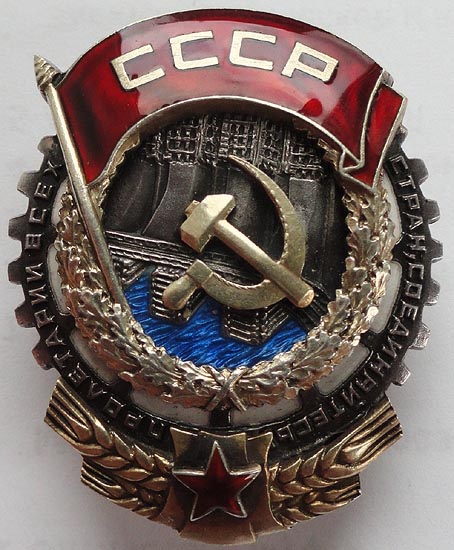
1980 .
, 4 1984 .
— , , , , . , ! . , 100 , « ». — , , . - , , .
: ,
. . « . . » , . . « . ».
BLACK FRIDAY : 30% - BLACK30% 1-6 !
These are not just virtual servers! This is a VPS (KVM) with dedicated drives, which can be no worse than dedicated servers, and in most cases - better! We made VPS (KVM) with dedicated drives in the Netherlands and the USA (configurations from VPS (KVM) - E5-2650v4 (6 Cores) / 10GB DDR4 / 240GB SSD or 4TB HDD / 1Gbps 10TB available at a uniquely low price - from $ 29 / month , options are available with RAID1 and RAID10) , do not miss the chance to place an order for a new type of virtual server, where all resources belong to you, as on a dedicated one, and the price is much lower, with a much more productive hardware!
How to build the infrastructure of the building. class c using servers Dell R730xd E5-2650 v4 worth 9000 euros for a penny? Dell R730xd 2 times cheaper? Only we have 2 x Intel Dodeca-Core Xeon E5-2650v4 128GB DDR4 6x480GB SSD 1Gbps 100 TV from $ 249 in the Netherlands and the USA!
All Articles